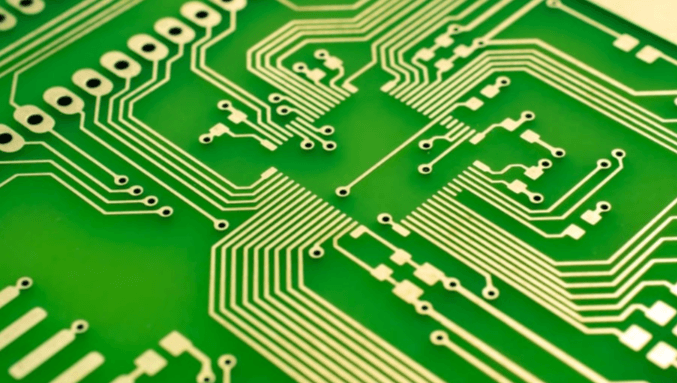3D PCBs: Pushing the Boundaries of Circuit Board Design

Because many people decide to buy gadgets that are quicker, more compact, and more effective, the electronics industry is changing continually. This growth is found to be fueled by three design disciplines namely the printed circuit board design, integrated circuit packaging, and very large-scale integration designs. These related disciplines are the building blocks on which are being built the future of electronics. Altogether, they have created several achievements that in turn are significant developments in the world of modern-day technology.
Design Disciplines Working Together:
Even though their main aim is diverse, PCB design, IC packaging, and VLSI are all integrated to provide a boost to electronic devices. Design PCB helps to connect the electronic components and to protect them from harm while VLSI design constructs the complex integrated circuits that represent the brains of the gadgets. The protective layer that is given to the vulnerable chips and connects the chips with the rest of the world is given by the IC packaging. The future of electronics is therefore characterized by a synergistic relationship between these fields where one is influencing the other.
Circuit Board Design: A Model of Creativity
As electrical devices become more small and complicated, PCB design is changing to accommodate these needs. Substantial multi-layer platforms that provide complex signal routing and high-density component placement have replaced the basic two-dimensional boards that once constituted PCBs.
Higher frequency support, improved thermal management, and seamless integration with sophisticated IC packages are key components of the PCB design of the future. This is the future that better PCB design is enabling: imagine electronics that can fit into clothing or mould to the shape of the human body.
Using embedded components more frequently is another trend. Unprecedented levels of performance and compactness can be achieved by designers by directly incorporating passive components into the PCB framework. Through the reduction of solder joints and connections, this method not only reduces space but also increases reliability.
Electronic Circuit Packaging: Shielding and Linking the Core
The vital link connecting the micro world of circuit boards and the complex world of silicon chips is IC Packaging Design. To guarantee peak performance, dependability, and thermal control as chips get stronger and more complicated, packaging technologies need to advance.
Possibly the most important trend in IC packaging is the drive towards 3D integration. Packaging engineers can reduce the overall footprint of devices while increasing functionality significantly by stacking chips vertically and utilizing through-silicon vias (TSVs). Heterogeneous systems, which bundle many chip types—like processors, memory, and sensors—into a single, incredibly effective package, are becoming possible thanks to this 3D methodology.
Further advancement in IC packaging is found in advanced cooling systems. The performance and lifespan of chips might be adversely affected by the increased heat produced by powerful chips. To keep chips running as efficiently as possible, new packaging designs use advanced thermal management techniques like phase-change materials, integrated heat spreaders, and microfluidic cooling channels.
Designing VLSIs: Exceeding Integration Boundaries
Moore’s Law and beyond are being pushed by VLSI design, which is still at the forefront of semiconductor research. To continue the trend toward more potent and effective processors, VLSI designers are investigating novel materials, topologies, and design techniques as the physical constraints of conventional silicon-based transistors draw closer.
Moving toward more specialized architectures is one of the main trends in vlsi designing. ASICs and domain-specific architectures are receiving more attention as general-purpose CPUs retain their advancements. As opposed to general-purpose solutions, these specialist chips offer notable performance and energy efficiency gains because they are designed for specific applications like machine learning, cryptography, or signal processing.
Uncharted terrain is being reached in VLSI design due to the research of new materials and device structures. Future developments hold promise for completely changing the way to create integrated circuits, including graphene, carbon nanotubes, and possibly quantum computing. Chips with exponentially greater power and efficiency than those made using silicon nowadays may result from these new paradigms.
Read also Expert Plumbing Services in Harpenden: Your Go-To Choice
Integration and Design at the System Level:
These fields are coming together more and more as PCB design, IC packaging, and VLSI design develop. As a result of this convergence, system-in-package (SiP) solutions—which combine several chips, passive parts, and even antennas into a single package—are being developed.
It is becoming more difficult to distinguish between once distinct domains when designing systems with an integrated approach. VLSI designers now have to think about how their chips will work with the rest of the system, while PCB designers have to think about the implications of sophisticated IC packages. An increased ability to optimize at every level of the electronic system is being facilitated by this convergence, which is producing more integrated design tools and techniques.
New electronic gadgets that are more powerful, more portable, and more energy-efficient than ever before are the outcome of this confluence. With integrated design techniques, whole new product and application categories are possible, ranging from smartphones that can execute intricate AI tasks to autonomous cars that can interpret massive volumes of sensor data in real time.
Obstacles and Possibilities:
Electronics appear to have a bright future, but there are a lot of obstacles to overcome. Current design tools and production techniques are not keeping up with the rising complexity of designs. Packing greater functionality into smaller places makes issues like power management, thermal dissipation, and signal integrity progressively more challenging.
These difficulties do, however, present amazing chances. Investments in new technology and processes are being driven by the need for creative answers. To satisfy future expectations, the electronics sector is always changing, utilizing improved materials, manufacturing techniques, and sophisticated design automation tools.
Conclusion:
Three key areas are influencing the future of electronics design: VLSI design, IC packaging, and PCB design. From flexible screens and wearable health monitoring to brain-computer interfaces and quantum computers, their cumulative advances are making it possible to create machines that were previously only found in science fiction.
PCB designers, packaging engineers, and VLSI architects are pushing the envelope of what is feasible at the labs and design centers where the future of electronics is being written today. Looking ahead and know that the most innovative developments in electronics will come from continuous improvements in VLSI design, IC packaging, and PCB design. These developments will undoubtedly shape the most exciting electronic advances to come.







